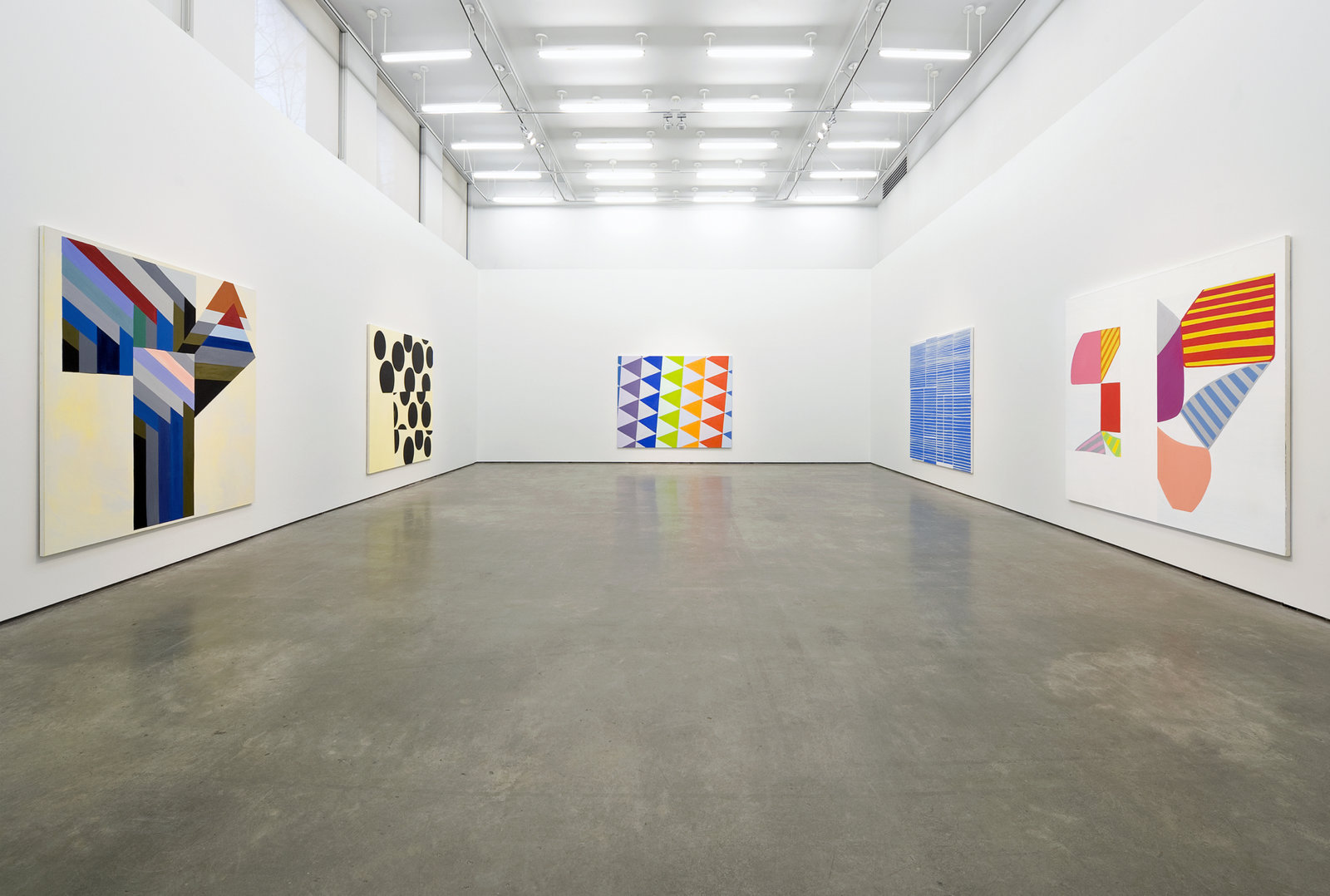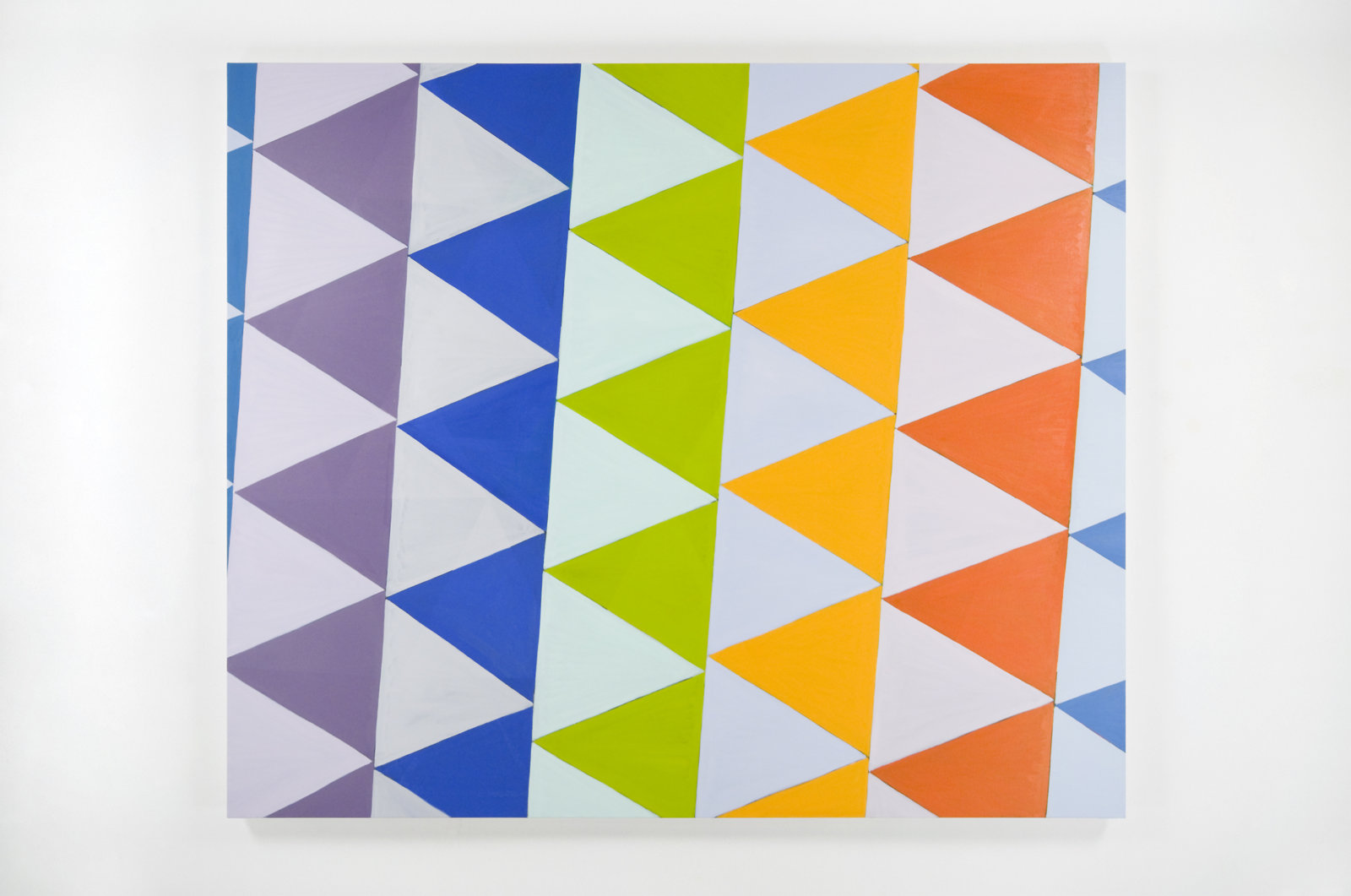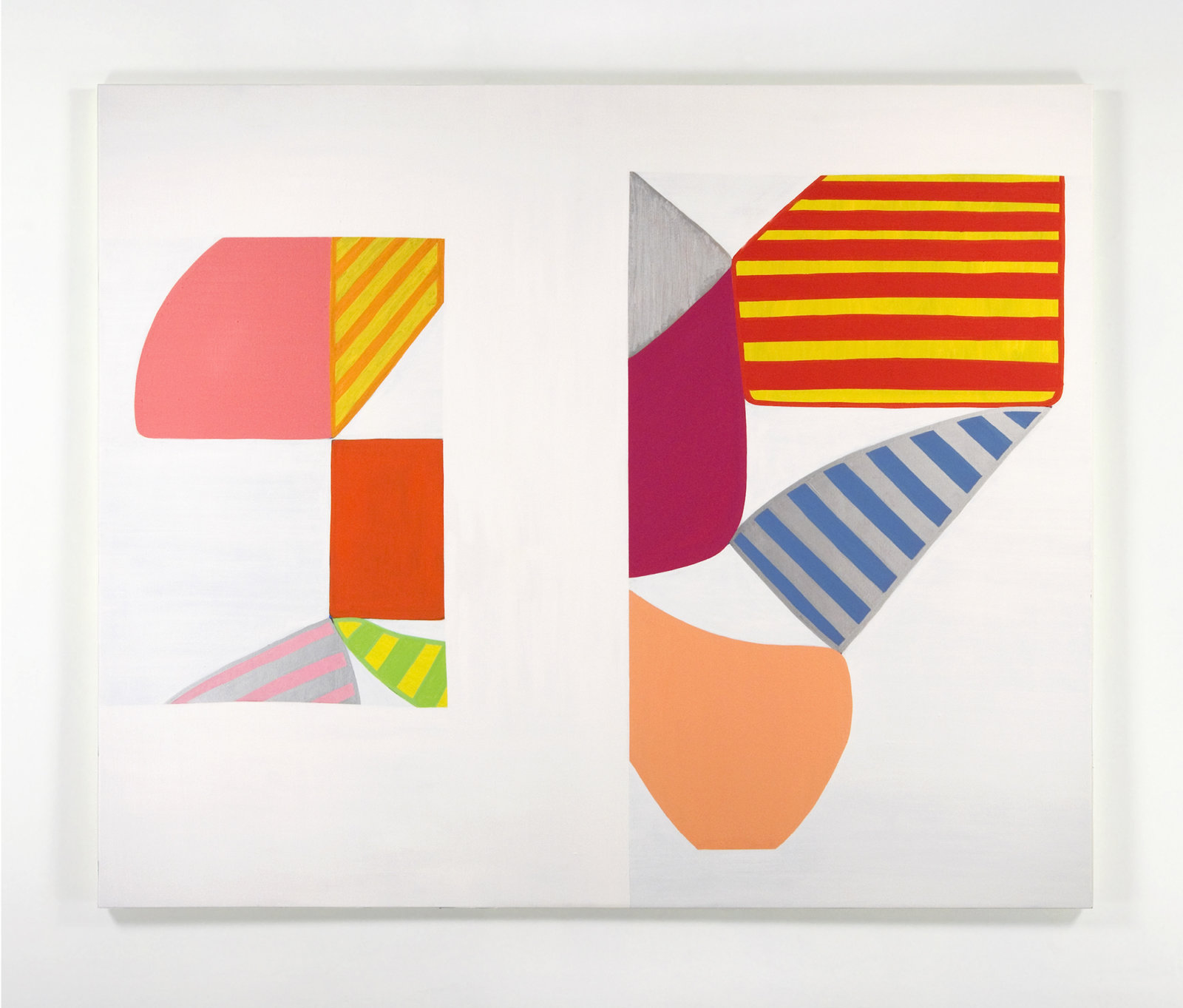Elizabeth McIntosh – Violet's Hair, NOVEMBER 19, 2010–JANUARY 9, 2011
Elizabeth McIntosh
Violet’s Hair
November 19, 2010–January 9, 2011
Contemporary Art Gallery, Vancouver, Canada
Whether it’s for mere seconds, there is a common understanding of how to physically approach and descend painting, moving from one to the next, following the walls, periodically standing back to take in the whole or budging in for the details. As a generality, these movements are rote and the physical experience parochial, non-threatening, and enacted as if by habit. A paradox I’ve repeatedly encountered lies between the experience of viewing painting verses the desire and ability to speak about it. The physical terms of engagement are easy, but expressing that experience, verbalizing it, is a different matter. Widely speaking, we leave not only painting to painters but also the conversation around it.
This preamble is an attempt to establish that there is an awareness of looking, but not necessarily of what is being looked at. So even though there is a certain comfort level with viewing painting, this familiarity doesn’t necessarily translate into understanding—basically experience and comprehension don’t go hand in hand. The assured physical approach toward a painting turns into tentative steps when it comes to expressing one’s perception of what is encountered. Confident movements conceal feelings of doubt, but this doubting isn’t necessarily a problem, maybe it’s exactly where the viewer should be. It certainly mimics Elizabeth McIntosh’s process.
Doubt is confidently where McIntosh begins her paintings, and follows her from start to finish. Traces of this uncertainty are left on most of her works, as parts are painted over and layers of choices, forms and colours, are obscured by other choices. What at a distance often seem solid, at times graphically delineated, layers of planes later reveal themselves as textured varying depths of what was tried before—of the other considered possibilities. Many paintings lie underneath each one, revealing that she doesn’t assertively know what works. There are of course some predetermined plans, preliminary ideas of where to start, an established palette and some external sources, which may be as basic as a shape she will use to form a pattern or as referent as an architectural form. But even with such planning, nothing is set as she paints over earlier decisions not even knowing if what she applies over top of the original shape or colour will be better, and it is this uncertainty that drives each painting into existence.
Uncertainty is familiar to the process of making and reading artwork. This lack of sureness is productive, but only if it is expressed. So how then do you solicit viewers to take the risk of expressing their tentative perceptions of what they steadfastly approach? There must be an understanding that this doubt is as deliberate as the steps taken to view a painting, established from the beginning as a preset to the making of the work as it is to its reception. As a viewer, I don’t want to walk up to a painting already knowing it, and this is reflected in McIntosh’s process. She doesn’t envision the end before she starts. For her it is implausible. The properties of uncertainty, as something that is more about finding improbabilities than it is about indecision, pushes the formal conversation. And as an engaged viewer, this same speculation should apply, begetting a dialogue not limiting it.
In Violet’s Hair, McIntosh’s solo exhibition at the Contemporary Art Gallery, she applied doubt as a concept, not only through her painting but also through her collage works. Her small collages quantifiably demonstrate this uncertainty as they are much more flexible and easily modified than a painting. For this exhibition, McIntosh shifted scales, building two large-format collages: one wrapped the exterior of the gallery, using the window vitrines, and the other occupied one of the galleries; each carrying a dimensional quality. This was not the first time McIntosh had worked with collage in this scale, but it was the first instance in which she had built a structure as the ground. Not wanting to address the existing architecture, she had built architecture of her own to resist creating an installation and to refrain from positing the collage as an environment that might seem more radically engaging than the paintings in the other gallery. Instead, the collages exemplified the instability of each of her paintings. Each cut out, whether it was cut from a sheet of store-bought photo backdrop paper or was a hand painted piece of Mylar paper, could be moved, replaced, and reframed. Nothing was solid, each piece was applied with a decisive un-assuredness. Not to say that the collages didn’t have their specific properties and a set of contingent aesthetic qualities. Unlike the paintings the large collages were remarkably ad hoc and provisional. The paper was just pinned to the wall and the walls were temporary. But the collages were built from McIntosh’s experience and sensibility as a painter. If a cut-out layer showed through another, it gave hint to McIntosh’s painting process—to what lies beneath the paint that she had given way to a new and possibly final surface.
–Jenifer Papararo






